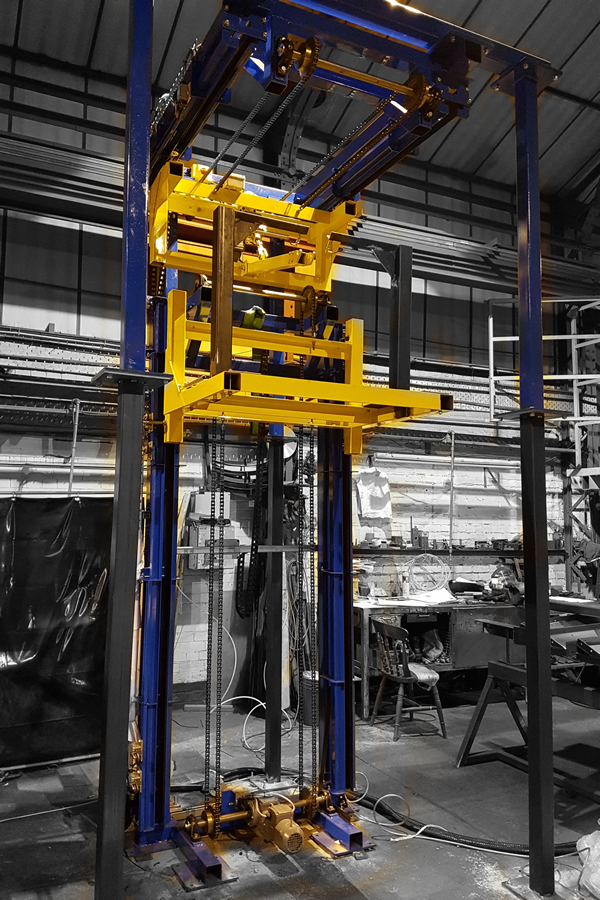Affordable Lift Repair Near Me: Professional Specialists at Your Service
Affordable Lift Repair Near Me: Professional Specialists at Your Service
Blog Article
Digging Into the Globe of Lifts: Usual Issues Encountered by Different Lift Systems
As we navigate through the vertical transport systems of modern-day buildings, lifts stand apart as a vital element of our every day lives. Nevertheless, behind their seamless operation exists a world of complex mechanisms that can sometimes encounter challenges. From hydraulic lifts to traction systems and machine-room-less layouts, each lift type comes with its collection of usual problems. Recognizing these difficulties is important for ensuring the smooth functioning of these crucial systems. Allow's check out the intricacies that underlie the operation of elevators and the potential issues that can develop, clarifying the detailed internet of lift systems.
Hydraulic Elevators
Hydraulic lifts, typically chosen for low-rise structures, utilize fluid stress to regulate the motion of the elevator auto (lift repair companies). This mechanism involves a hydraulic pump pressing oil into a cyndrical tube, triggering the lift to relocate the wanted instructions. While hydraulic lifts are understood for their smooth and silent procedure, they do feature their very own set of usual problems
One prevalent problem with hydraulic elevators is oil leak. The seals in the hydraulic system can put on out over time, resulting in oil seepage. This not only creates a mess yet can also impact the elevator's efficiency if left unaddressed. Additionally, issues with the control system, such as faulty valves or a malfunctioning pump, can create interruptions in the lift's motion.
Normal maintenance and prompt repair work are necessary to make certain the smooth performance of hydraulic elevators. By addressing these common concerns proactively, structure proprietors can lessen downtime and ensure the safety and performance of their upright transportation system.
Traction Elevators
When considering vertical transport systems in structures, an additional common kind in addition to hydraulic lifts is the grip lift. Grip elevators run making use of a system of ropes and weights that relocate the lift vehicle by gripping onto the hoist ropes. This device permits smoother and faster vertical transport compared to hydraulic systems.
Among the typical concerns faced by grip elevators is rope wear. The consistent motion of the ropes within the grip system can result in wear and tear with time, possibly creating the elevator to malfunction or become harmful for usage. Normal assessments and maintenance of the ropes are vital to ensure the elevator's correct functioning and safety.
An additional concern that traction lifts may come across is connected to the control system. Issues with the control system can lead to problems such as unpredictable motion, hold-ups in response times, or perhaps full shutdowns. Regular testing and upkeep of the control system are critical to stop such concerns and guarantee the elevator's integrity.
Machine-Room-Less (MRL) Elevators

Among the crucial parts of MRL lifts is the portable gearless traction machine that is mounted within the hoistway. This equipment effectively drives the lift car without the need for bulky tools located in typical traction lifts. Furthermore, MRL elevators typically use a counterweight system to balance the car, more boosting their power effectiveness.
In spite of their advantages, MRL elevators may encounter obstacles connected to upkeep and fixing because of the confined area for devices setup. Accessibility for servicing parts within the shaft can be limited, calling for specialized training for specialists. Correct upkeep schedules and normal inspections are critical to ensure the continued smooth operation of MRL lifts.
Overloading and Weight Limit Issues
Are elevators equipped to handle excess weight tons effectively and securely? Straining and weight limit concerns are crucial worries in elevator procedures. Elevator suppliers style raises with certain weight abilities to make certain traveler security and equipment longevity. Going beyond these weight limitations can cause numerous troubles, consisting of mechanical failings, hold-ups, and safety and security dangers.
When elevators are strained, it puts too much pressure on the motor, cords, and various other components, potentially causing failures or malfunctions. If they identify excess weight, security mechanisms such as sensing units and overload sensing units are in place to avoid elevators from relocating. In addition, surpassing weight limits can lead to raised power usage and wear and tear on the lift system.
To alleviate overloading issues, constructing supervisors like this should prominently present weight limitations in elevators and educate occupants on the relevance of sticking to these constraints - lift repair companies. Routine maintenance checks by qualified professionals can additionally aid make certain that lifts are operating within risk-free weight criteria. By addressing overloading and weight limitation problems proactively, structure owners can improve elevator safety and effectiveness
Electrical System Failures
Going beyond weight restrictions in elevators can not only lead to mechanical concerns but likewise possibly add to electric system failures within the lift facilities. Electric system failings are a crucial concern in lift operation, as they can create unanticipated shutdowns, breakdowns, or also safety hazards.
Routine upkeep and assessments are critical to identify and resolve possible electric concerns immediately, making certain the risk-free and effective operation of elevator systems. By sticking to weight limitations and conducting routine electric system checks, structure owners can mitigate the threat of electrical failings in elevators.
Final Thought

Hydraulic elevators, typically favored for low-rise structures, use fluid pressure to control the activity of the lift cars and truck.When considering vertical transport systems in buildings, one more common kind apart from hydraulic lifts is the traction lift. Grip elevators run utilizing a system of ropes and counterweights that relocate the elevator automobile by clutching onto the hoist ropes. Unlike standard elevators that need a separate maker space to house the tools, MRL lifts incorporate next page most of the parts within the shaft, removing the requirement for a committed equipment area.In verdict, lifts face typical problems such as hydraulic breakdowns, grip system failings, and electric system issues.
Report this page